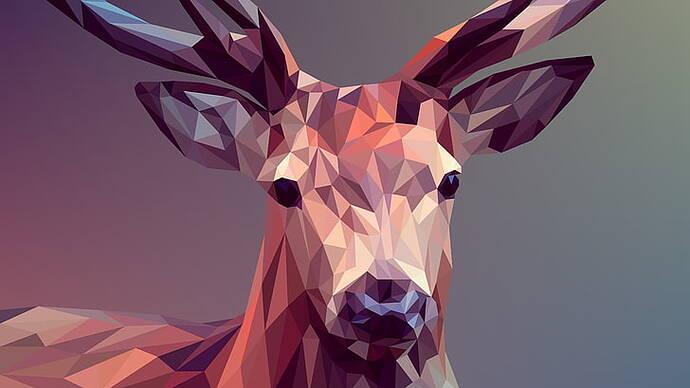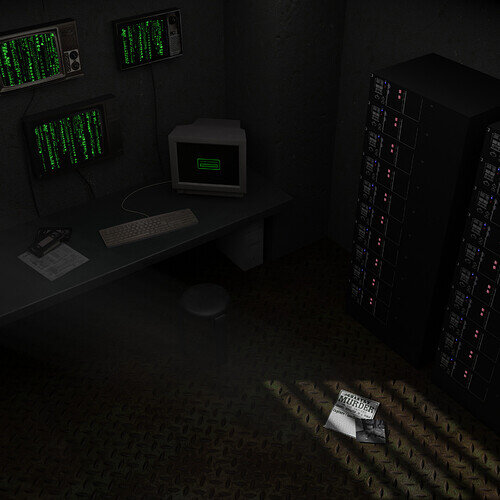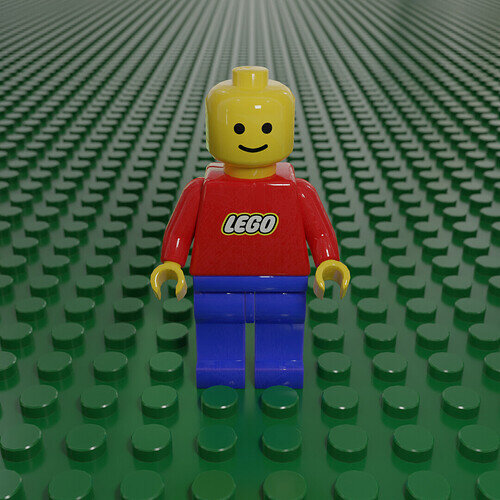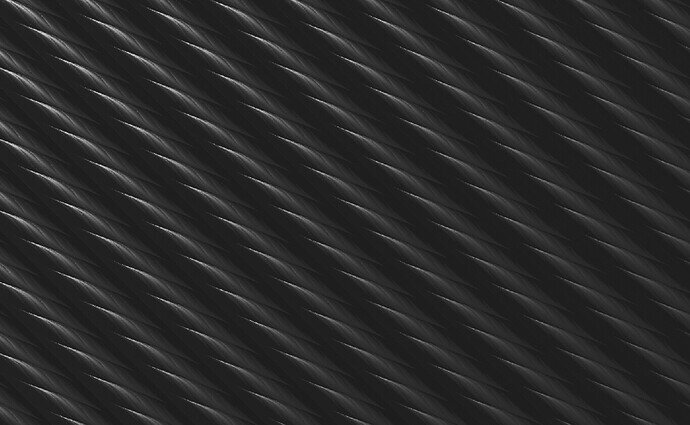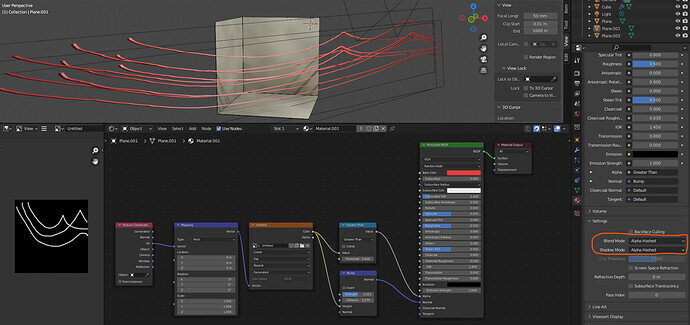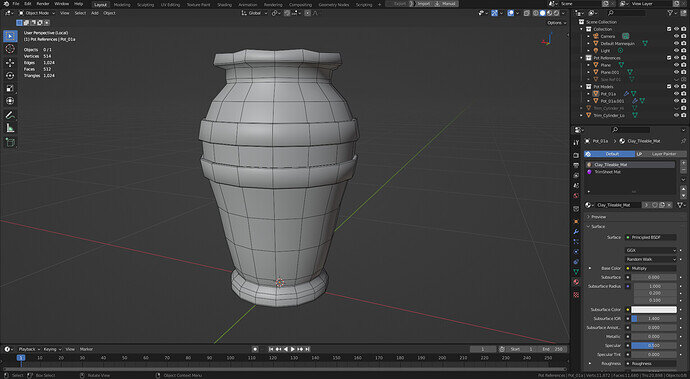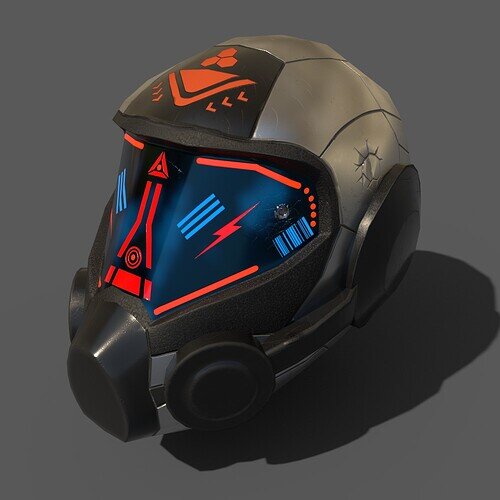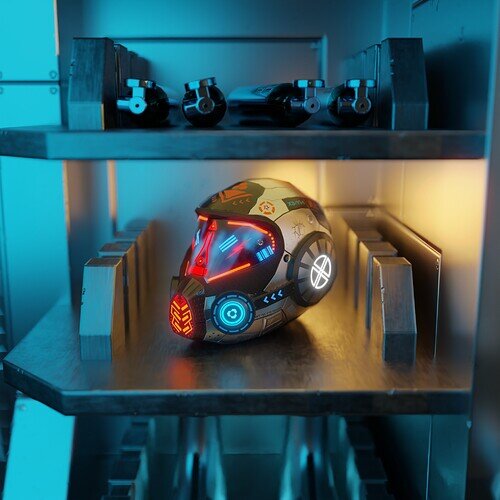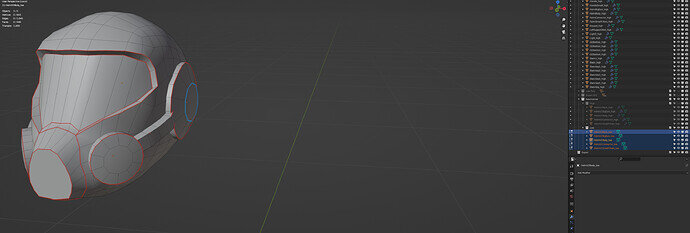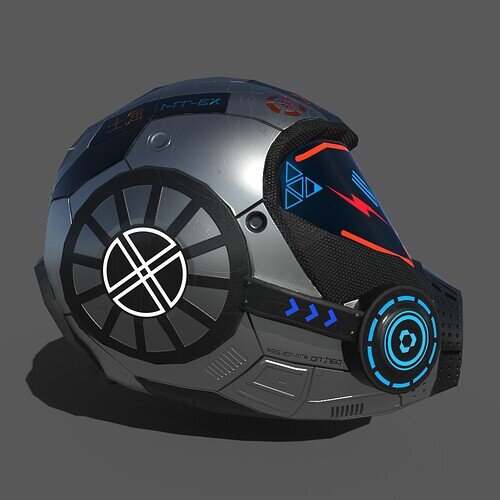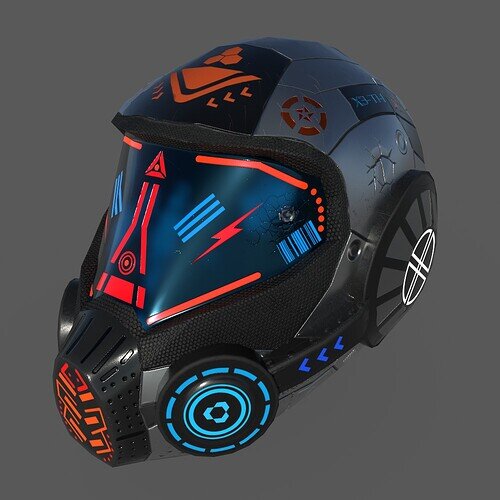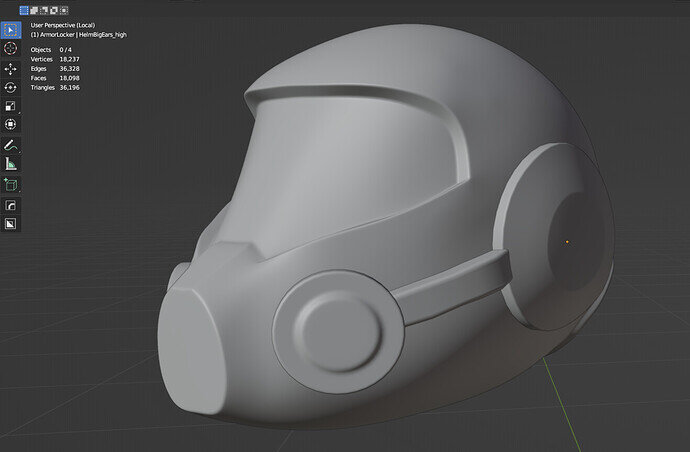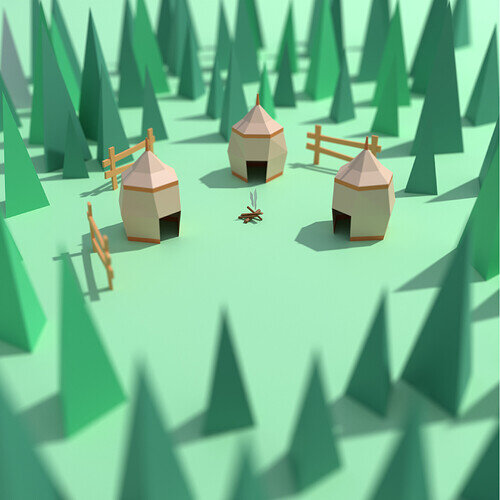Yep, that´s probably right. I just wonder how it can be possible to bring the count in object mode down to a low number with that technique if the statistics also account the info from the geometry baked onto a plane. Or if just got everything about baking wrong. Guess stuff like that is possible on a pro level i´m just too far away from 
I just looked through a view more sites about the topic and have to admit, that i misunderstood the whole thing. I´m really sorry for having spread confusion!
What baking seems to be:
The process of creating different uv-maps from high-poly objects with colour coded information to different aspects (height, normals, albedo, roughness).
(Applying those maps onto a plane can probably bring the visual illusion of existing high-res geometry, when viewed in specific angle, but the plane remains flat as an object, as seen when rotating the camera-view. In the end there are no additional vertices, which blender could count because it´s all just a clever projection because geometry isn´t changed)
What i thought baking is before:
The process of applying those maps onto a plane with displacement-modifiers, so that geometry comes to existance on the plane completely without modeling the mesh. In a way really like baking a cake, which you can rotate around and which keeps its form from every angle.
And this is also possible BUT the program indeed creates additional vertices based on the maps and modifiers like subsurf/displacement. So those vertices/quads/tris will be accounted in the statistics.
But i´m still not completely sure. It would be so great if someone who really knows it could tell if this understanding is true or false. Every page i find about it is a really long and confusing read with so many steps. Some really simple and short true/false-statements would be a great help 
EDIT:
It´s a deep topic. So i´ll restrain from bringing it up in this collab thread again.
I was quite confused just now too. But what you wrote now is exactly how I understood it.
You can bake textures, which is what you described. There’s also baking light / simulations, which is basically “pre-calculating and saving” as I understood it, so it isn’t done realtime. Relevant for Games for example. xD Anyways, good job googling and so on, it’s so confusing when everyone describes technical aspects of Blender with SO MUCH detail. I have definitely gotten lost in it before! xD
Edit: Just to clarify, I deleted my earlier post about baking to normal textures because I was confused and thought that I must have misunterstood something and that it’s thus irrelevant to the discussion ^^’
Low poly is what games make or break. You see a high level of detail but is basically low poly with a very smart level of details techniques. Object far away is low poly, sometimes just a bitmap. Closer to the camera, more tris are involved. Using baking techniques, even shadows are baked.
So you can for this collab create a very high detailed scene. With a few vertices but rendered with a lot of textures. Mimicking a lot of details. It all depends on your skills.
As far as I understand you can make a very detailed high poly model. Then you would bake it onto the low poly model: with hp model selected click on the lp model and check “selected to active” in the Bake tab, set up the ray distance and bake. Make sure your lp model is unwrapped, and don’t forget to create a new texture in the material (it doesn’t have to be plugged in, just make sure it’s active so Blender uses it for a new bake). You can just bake the diffuse map with no shadows (you’d need to have no lights and a white world, Diffuse Bake type with only colour checked), and then bake normal map separately. This way light will react to your model as if it has a lot of details. Or if it’s a mobile game and you can only use one texture map, set up the lights in the scene and do a combined bake. You can check out this video.
You’ll have very low poly count with an illusion of high detail in the end. I think I’ll approach this challenge with this workflow as I’ve never really had an opportunity to try it myself. Hope I clarified some things for you 
Just an image from the web, to confuse you all … 
This is low poly art, an example from the web. Search for low poly art.
all tri’s.
I realized round stuff like cables is evil, at least, when you are trying to keep the polycount down ^^
Here’s my image now, added a few stuff. It’s now 834 tris (including invisible planes for lighting). Wish I could have exactly reached the 1’000 limit, but I am out of ideas of what to add, without destroying the composition. (I’m looking at you, left corner!)
Here's my image version with cables!
Some rather high-poly cables in the corner. (They were getting my numbers too high anyways - I tried to make it work, but it just looked horrible, believe me - so why not just make it extra smooth xD) Wayy over 1000 tris, so not my entry. Thought I’d share it with you all anyways, just because I like it ^^
Also fun, for my first try of this challenge, I thought: Hey, lego's are low poly, let's try this...
Not even close → 2,964 tris (without green background):
Good luck finishing your entries over the next few days!! 
Edit: added the lego-thingy 
yeah, they are… esp. if you want to have movement etc. in your scene… then there is no avoiding the extra geometry (at least no way that I know off). When you have full control over it… you can basically use a cube… or a plane…
Nice thick wires… right?
Edit: and to add something useful to discussion… Watch some lazy tutorials of Ian Hubert on YT. He shows a lot of cool tricks that fool the eye. And I recommend watching his World Building talk too.
I like it! Such a nice little mood piece. I sort of picture a story where the absent person perhaps got lost in the matrix, but the media speculated that he/she was murdered instead. Maybe a trash can for the left side?
The lego guy is cool as well! I can see how trying to lower the count would really mess with the look we all know so well.
Can use image-planes with alpha and bump to fake wires (with shadows and reaction from light)
…remember to set the transparency settings if using Eevee.
Also, change the falloff to something sharp when texture-painting the wires to get more control of the wire width using the greater than math node.
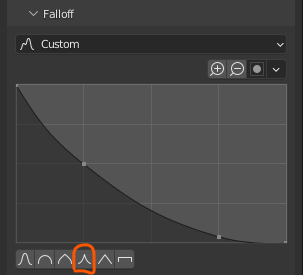
Good luck.
That’s cool, ty for the tip @Jaco_Pretorius!
And also for your comments @bOBaN (yes, Ian Hubert is awesome!) & @ZachDude !
Here’s my submission:
Summary
This was taken as a screenshot in UE5, and a number of other software was used in addition to Blender. If you’re interested in seeing some of the process, I made a thread here  Week 16 Collab WIP
Week 16 Collab WIP
Each pot has a polycount of 1024 triangles, which is exactly 1k! 
Hopefully this is a good example of how big a difference materials and lighting makes! Now I just need to make the rest of the environment for them to go into…
So I decided to re-make sci-fy helmet I made recently for the collab. Exactly 1000 triangles, but still much work to do WIP render:
Done! It took way more time and effort than I originally anticipated. Here is my submission:
And short video showing it from all sides:
And some more details on my process (instead of diary)
As I struggled a lot when making a helmet for the first time, the original idea was to re-do the one I made here: Making hard surface models for games
The previous helmet is based on helmet from a game (Empyrion) and it looks as follows:
My first reinterpretation looks like that:

But Empyrion’s style was quite limiting. First, I wanted to give it more futuristic and more angry/scary look. Second I wanted to tell a bit of a story with it. It’s not a helmet straight out of factory lines. It was used heavily in exploration and combat. It proved to be effective against melee hits (though it has a scar from that encounter) and even saved the hero after well aimed shot at his visor :).
So I took the original helmet and made a new low poly version. It was 1236 triangles, so I had to make even lower poly version. That proved to be quite hard. High poly version has 36k triangles and combines smooth and sharp edges:
So with each triangle I removed - the shape was going too far away from the high poly. Which caused baking issues. So I was going through many iterations of: 1. lower triangle count 2. bake 3. correct shape 4. bake 5. goto 1. This was really tedious.
After I got mostly clean bake I imported it to substance painter, gathered multiple references and spent many, many hours on texture painting.
Last, but not least step - I took it back to Blender. Made a final scene, added lighting, choose camera movement and rendered. And I was liking the result well enough so I even rendered a video of it  . And the final result is as you can see at the top of this post :).
. And the final result is as you can see at the top of this post :).
Edit:
Amazing !
I loved it!
Your entries are so great! I love the fact that some people went for stylised textures and others showed a full high to low poly workflow. I really wanted to make an entry too but unfortunately something came up and I wasn’t able to find any time for my project. I’ll definitely finish it at some point so I can try some of the tips mentioned in this thread!
We @BlenderCollab have a few days to vote. You can vote fast but also think slowly about design, colors, technique, difficulty, subject, realism, etc. Choose consciously and not on your own entry.
And the new subject week 17 " Character & Posing ” has already started. The winner of this week’s “1,000 Tris” challenge may select a subject for week 18.
Hahaha! I didn’t realise I had submitted that house… I got side-tracked when trying to find out how to get a fitting roof and wall texture. Ah well, so it goes, hahahahahaha! It’s, as always, a hard choice among the other entries.
@bOBaN congratulations! Beautiful composition, partly due to the use of color and lighting. Attention is focused on the colorful and imaginative helmet. The small details in the material used create a realistic image.
- debi_prasad - Personally, I thought your submission was the best in terms of subject matter and purpose of the assignment. The chosen style and camera focus go well together. It’s a shame you didn’t elaborate this concept in more detail.
- ZachDude - I like the way you’ve used textures. But also the use of color throughout the scene. The transition between pot and background sky is too strong. Sharp edges that could probably be softened with a little more polygon.
- Sblendid - Great underground hackers scene? With a little ‘Murder’ story. It is too much Matrix-style and less focus on the Murder story … color photos on the monitors, give more color to the dark scene.
- Yee - Funny
- mimsybean - Add more color and items to the scene. Street lights, chimney. Duplicate the house to make a city scene.



